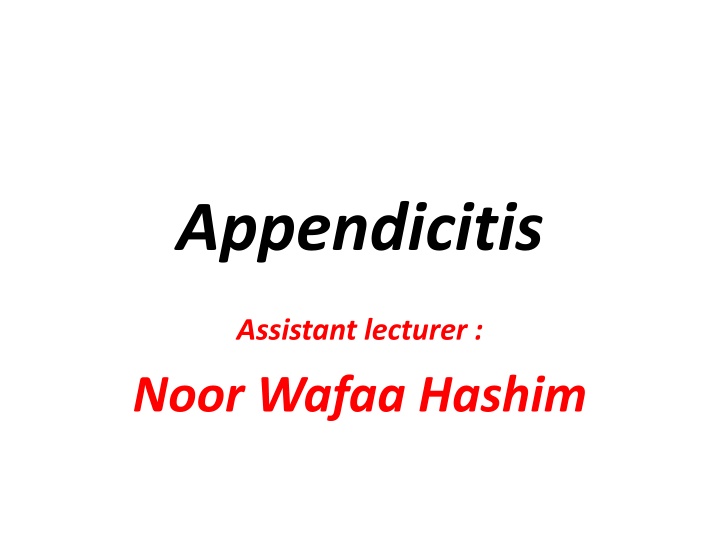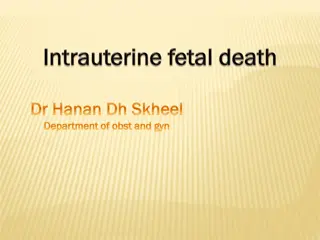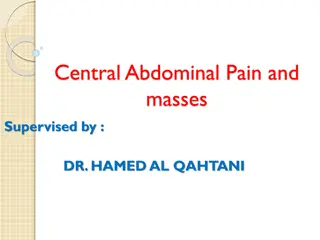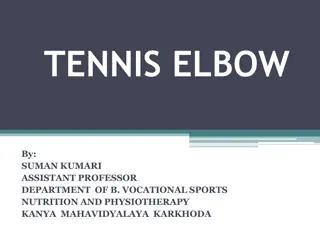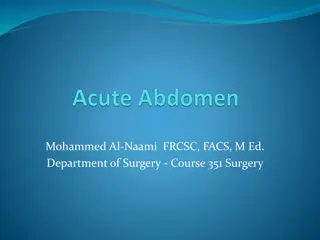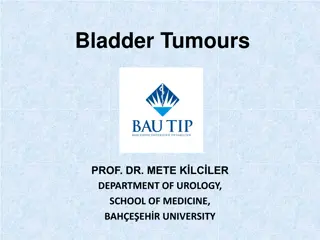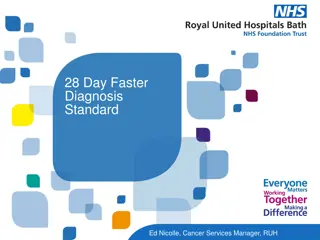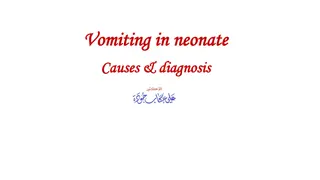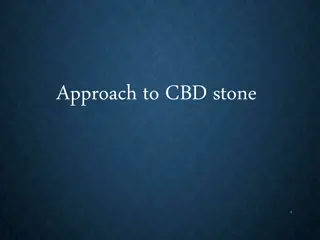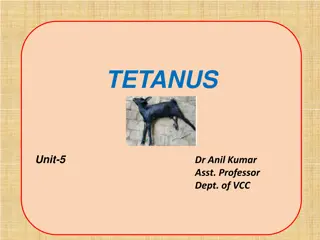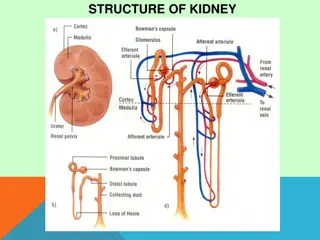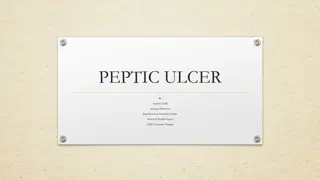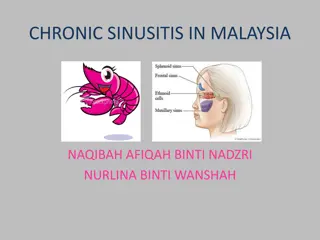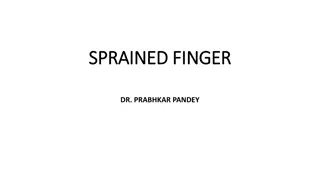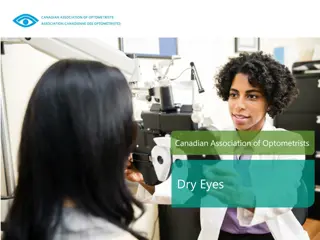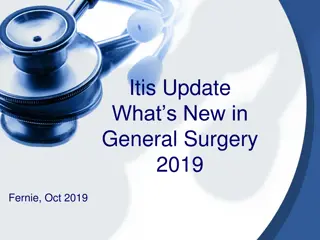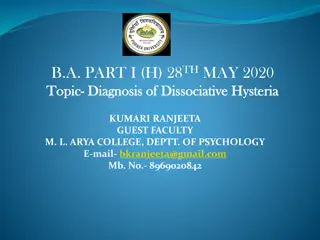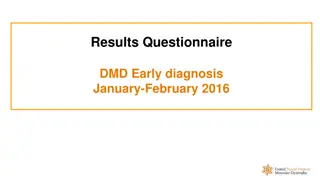Appendicitis: Causes, Symptoms, and Diagnosis
Appendicitis is a common cause of acute abdominal pain requiring surgical intervention. It predominantly affects individuals between 10 to 20 years, with abdominal pain being a key symptom. Diagnosis often involves imaging tests such as CT scans or ultrasound, along with physical examinations like Rovsing's sign and laboratory tests like full blood count. Prompt diagnosis and treatment are crucial to prevent complications like perforation.
Download Presentation

Please find below an Image/Link to download the presentation.
The content on the website is provided AS IS for your information and personal use only. It may not be sold, licensed, or shared on other websites without obtaining consent from the author.If you encounter any issues during the download, it is possible that the publisher has removed the file from their server.
You are allowed to download the files provided on this website for personal or commercial use, subject to the condition that they are used lawfully. All files are the property of their respective owners.
The content on the website is provided AS IS for your information and personal use only. It may not be sold, licensed, or shared on other websites without obtaining consent from the author.
E N D
Presentation Transcript
Appendicitis Assistant lecturer : Noor Wafaa Hashim
Epidemiology Commonest cause of an acute abdomen and surgical admission in the UK. Approximately one in seven people will have an appendicectomy. It most commonly occurs between 10 and 20 years; it is rare under 3 years of age.
Pathophysiology It usually occurs when the appendix is obstructed by a faecolith or foreign body in the lumen bacterial proliferation and invasion .thrombosis ...perforation
Clinical features Abdominal pain Initially vague, colicky central abdominal pain. right iliac fossa (RIF) pain Usually accompanied by a low-grade fever, nausea, vomiting and anorexia.
Abdominal examination Tenderness over McBurney s point is the usual feature. There may also be signs of peritoneal inflammation, including: Guarding, tenderness on percussion, pain on coughing or other movement. Signs of generalised peritonitis may develop as the illness progresses with abdominal rigidity
Rovsings sign: Pain is felt in the RIF when pressure is applied to the LIF. There must also be RIF tenderness for this sign to be positive. Psoas sign: The patient keeps his or her hip in flexion to relieve his or her pain. The appendix is anatomically adjacent to the psoas muscle, which is involved in hip flexion. PR examination may reveal tenderness anterolaterally on the right.
Diagnosis The performance of a full blood count (FBC) can be useful to determine whether or not the patient has a leucocytosis. A urinalysis to exclude urinary tract infection. A pregnancy test in women of child-bearing age is mandatory to rule out an ectopic pregnancy. An ultrasound scan (USS) in women can be useful where the diagnosis of appendicitis is in doubt to exclude tubo-ovarian pathology as the cause of RIF pain.
A computed tomography (CT) scan can be useful to confirm the diagnosis, especially in the elderly where a caecal tumour (colonic cancer)may be causative, or in the obese where examination is difficult. Diagnostic laparoscopy allows immediate treatment if appendicitis is confirmed. Urea and electrolytes (U&E) should also be performed to assess hydration status.
Management Patients are often dehydrated at presentation and so require fluid resuscitation. IV fluids should be continued whilst the patient remains starved for theatre=NPO Open appendicectomy Laparoscopic appendicectomy
Open appendicectomy Usually performed in children. A Lanz incision is used for the best cosmetic result. If the appendix is found to be perforated or gangrenous, then peritoneal lavage is performed to remove any pus or contamination. Most patients can be discharged on the second or third day post-operatively
Laparoscopic appendicectomy Improves diagnostic accuracy and minimises negative appendicectomy rates. It is indicated in patients who are unwell but there is question as to the diagnosis, and is particularly indicated in young women. It is useful in the obese where wound infections are more common and laparoscopic procedures have lower wound infection rates
Advantages of laparoscopic appendectomy May shorten hospital stay . Faster return to normal activities. Less post-operative pain. May result in quicker return to bowel function. Better cosmetic results.
Initial Managment The initial management of an appendix abscess is conservative with IV fluids, antibiotics and observation. They may require radiological drainage. If there is deterioration, or frank perforation, surgery may still be required.
Complications Abscess formation peritonitis. Wound problems, including infection or haematoma.
Intestinal obstruction due to adhesion formation within the abdomen. Patients with a perforated appendix may occasionally need admission to intensive treatment unit (ITU).
Appendicitis during Pregnancy Appendicitis is the most common non- gynecologic surgical emergency during pregnancy. It must be suspected in any pregnant woman with abdominal pain. Operation is indicated in pregnant patient as soon as the diagnosis of appendicitis is suspected.
